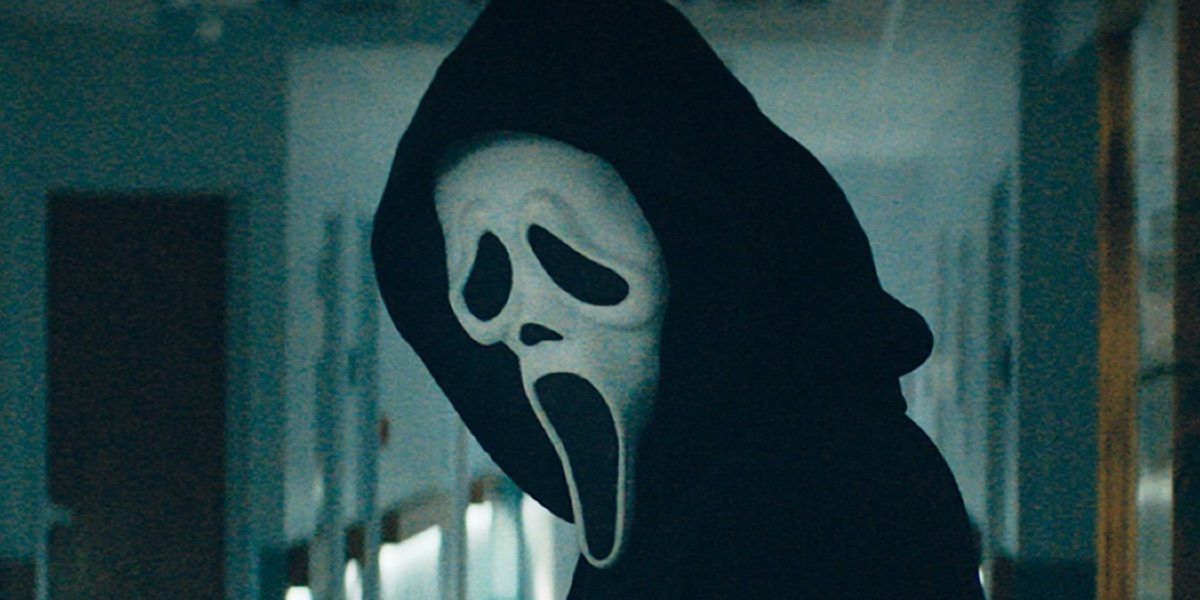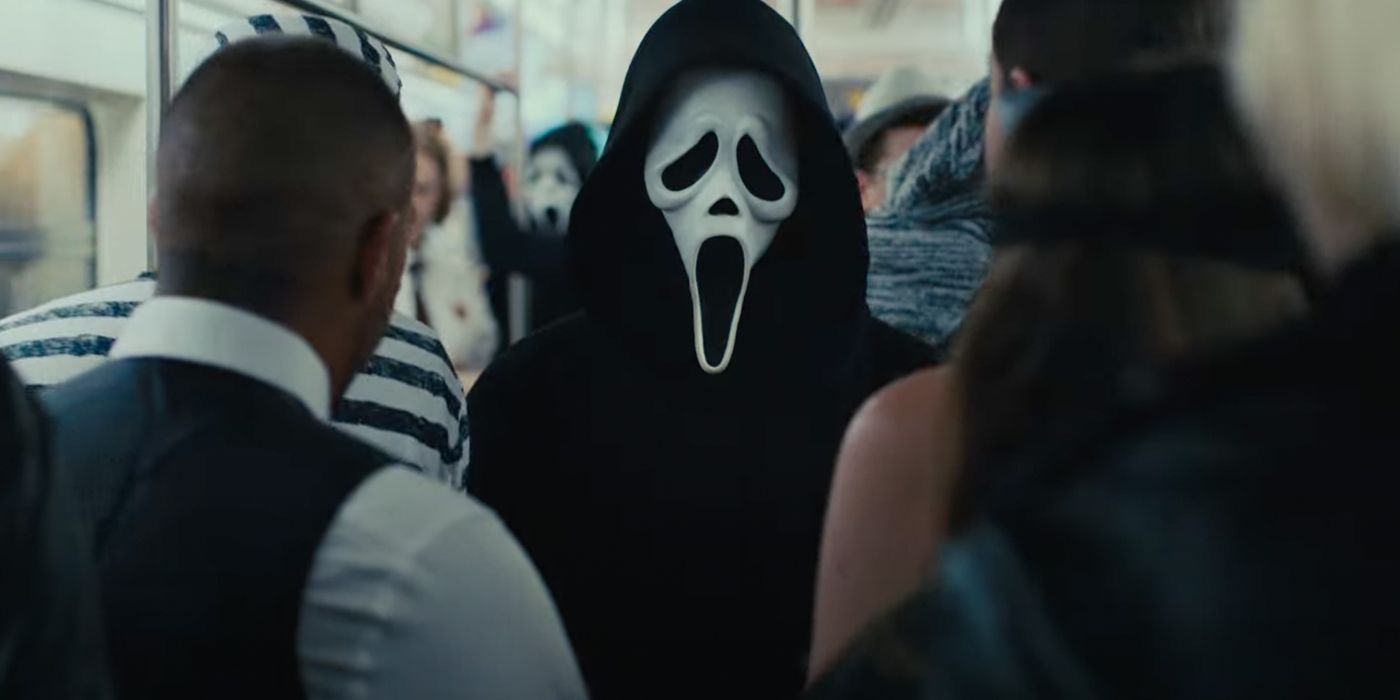In the horror slasher subgenre, two issues regarding some of its hottest villains hold true. The killer is masked, so they don’t communicate. Then here came Ghostface in Shout, a killer dressed in a stretched mask and black cape. It was quite scary. However, he then spoke in such a sinister voice that answering your phone became anxiety-inducing afterwards. A named person Roger L. Jackson is to thank for having created this voice, so emblematic that she would not want a face to accompany her.
In 1996, slashers were useless. From the mid to late 1970s with Tobe HooperIt is The Texas chain noticed a bloodbath and especially John CharpentierIt is Halloween, slashers became a popular craze that overtook cinemas in the ’80s. Teenagers flocked to theaters to see a plethora of masked killers hack their way through young victims for 90 minutes. There was Michael Myers, Jason Voorhees, Leatherface, and a whole host of silent, masked lunatics. Only a few villains have broken with this stereotype, most notably the burnt-out Freddy Krueger, who never shut up while tormenting his prey.
By the late 80s, lots had grown weary of unlimited Halloween, friday the thirteenthAnd A Nightmare on Elm Road sequels, all of which got worse as they went on. It was all over. There was nothing more to see. Then next came here Shout, a slasher so recent and completely different that it resurrected your entire subgenre. Its director, Wes Craventhe person behind An Elm Road Nightmare and the antics of Freddy Krueger, was the right man to make it happen. He was an outside-the-box thinker, as seen in 1994 when he again featured Krueger for A New Wes Craven Nightmarewhich took a meta look at the horror style. Shout sought to do the same, with a cast of characters who were all very aware of the slasher tropes they got caught up in.
Roger L. Jackson’s voice added so much to the Ghostface character
What did Shout really effective is that the villain was also aware of these tropes. In fact, he displayed them and killed by them. Ghostface, simply because of his looks, is pretty scary. He could have been effective as another silent murderer like Michael and Jason, but what really sets him apart is that he talks. No, it’s not quite like Freddy, where you see him chatting with his victim while he kills them. Ghostface speaks in his creepy, scratchy voice through those notorious phone calls, then asking him what his favorite horror movie is, playing cat and mouse with his prey as he lets them know their predicament is. sort of a horror movie.
Ghostface works like a mix somewhere between the masked slashers of Michael and Jason, and the sick and creepy talkative acting of Freddy. For Ghostface’s voice to work, when a voice is all you get in phone calls, he wanted to have the proper sinister supply. Enter Roger L. Jackson. The Atlanta native went to the Academy Theater in Atlanta where he studied language recordings. “I loved studying all the different lingo and channeling people’s voices, like a chameleon,” he told Vice in 2019.
His first role where he actually received to show his abilities was in a small half for the very big Tim Burton alien invasion comedy Mars Assaults! His time in the film is brief, but integral, as he performs the voice of the aliens’ translator who turns their language into English. He impressed enough that at the age of 38 he had the opportunity to check for Shout as a result of “Drew Barrymore I would have liked an actor to play the scene with, rather than a screenwriter just teaching him the strains of the killer.
Ghostface’s voice wanted to be both chilling but also captivating, because otherwise would he hold his victims, like Barrymore’s convict Casey Becker in the original film’s opening scene, on the road if he sounded more like a lunatic furious, say like Billy in black christmas. He wanted to inspire you to let your guard down and be his friend before turning your enemy. “There’s this erotic texture and coloring to her voice,” Jackson said. “It’s like a cat that sounds sweet and playful, but impulsively the paw goes down on the tail of the mouse. I wanted the voice to change color when Ghostface launches into the kill, much like a cat does .
In the first “Scream”, Roger Jackson left his traces on the set without being seen
What makes Ghostface’s voice that much more terrifying, especially for the actors involved, is that it wasn’t added throughout post-production. Instead, Jackson was really there, playing his residency half. With Barrymore in the kitchen of a real home, not on a built set, Jackson knelt outside and spoke to him on a cell phone with a mic. What you see on the display screen absolutely happens. There are no modification tips. “My point of view was what the killer’s would have been. It was genius,” Jackson said.
It seems minor, but this small factor made the phone name scenes much easier. You might think Barrymore’s concern was completely different, and certainly less intense, if it was just a few assistants on the side studying the strains of Ghostface from the script, just for Jackson to dub them later. Jackson did this for every phone name, just sitting off the set and not bringing any of the actors together in any way. This allowed the boogeyman to be a voice, an invisible presence not just for viewers but for many who had repeated their strains over and over but still had a new anxiety to tap into the moment with this technique. “It’s part of the psychology of Ghostface. Michael is Michael, Jason is Jason, but Ghostface can be anyone,” Jackson said.
This is precisely why Ghostface is such a favorite horror character and why Roger L. Jackson is so essential. If you enter directly into a Halloween movie, you recognize that you’re going to see Michael Myers in his masks slashing people and chasing Laurie Strode. That’s part of the explanation why Halloween ends received a lot of criticism, because fans received so little. If you placed on a friday the thirteenth sequel, you know you’re going to see Jason in his hockey masks sending out handsome campers. In Ghostface you’ll get the same masks and outfits, you’ll get smart kills, but the scariest half is the voice. Ghostface’s voice is the connective tissue that ties each film together and makes Ghostface feel like a sequel to a character.
Roger L. Jackson’s voice makes all Ghostfaces really feel like a stable character
As we all know, Ghostface is one or more unique people in all five films. It’s not Michael, it’s not Jason or Freddy, it’s about two teenagers who killed while wearing disguise, whose crimes remain as a sick thought passed down in copycat homicides. Ghostface can be anyone, which is always the most fun part of the Shout movies. However, other massive slashers don’t have a thriller Shout lives for his surprising killer and motivation revealed in the climax. What makes Ghostface a singularly feeling character like Michael and Jason, however, is the voice acting. This menacing voice is in every movie. Jackson has been in every movie, with Cry VI. It talks the same way and acts the same way, as chilling twenty-seven years later as it was the first time we heard it.
We all dread and anticipate those opening scenes when a phone rings and a poor, unsuspecting soul decides to answer and fall for its seduction. Ghostface is not only scary sounding, but sensitive. His physical type is beatable. Although the killer must be double tapped to die at all times, he doesn’t seem like an invincible monster like the masked hulks of the 80s. He’s clumsy and prone to falling over and getting his ass kicked. It really works, because under the dress is only a specific person. That’s what makes it so much more terrifying on the phone. There’s where Ghostface is actually a ghost. He cannot be crushed, shot or stabbed. It cannot be hunted, found or revealed. It is an invisible aura that is in charge and two steps ahead of its victims. He is in the direction and cannot be defeated. You could be at his mercy, and he does it cool all your time. What’s scarier than that?
So many slasher baddies are scary simply for their looks, and that can be replicated by putting any stuntman in a mask. While any masked stuntman can play Ghostface’s body type, only one man could be his voice. Without Roger Jackson standing outside at night, staring at the phone unseen from the shadows, terrorizing not just a character but the actor who plays them, you don’t have such an iconic killer. It’s hard to imagine the aftermath without him when the day comes when he decides to retire. In the meantime, let’s have fun with the best voice in horror, the one that has terrorized generations for more than a quarter of a century.






Add comment